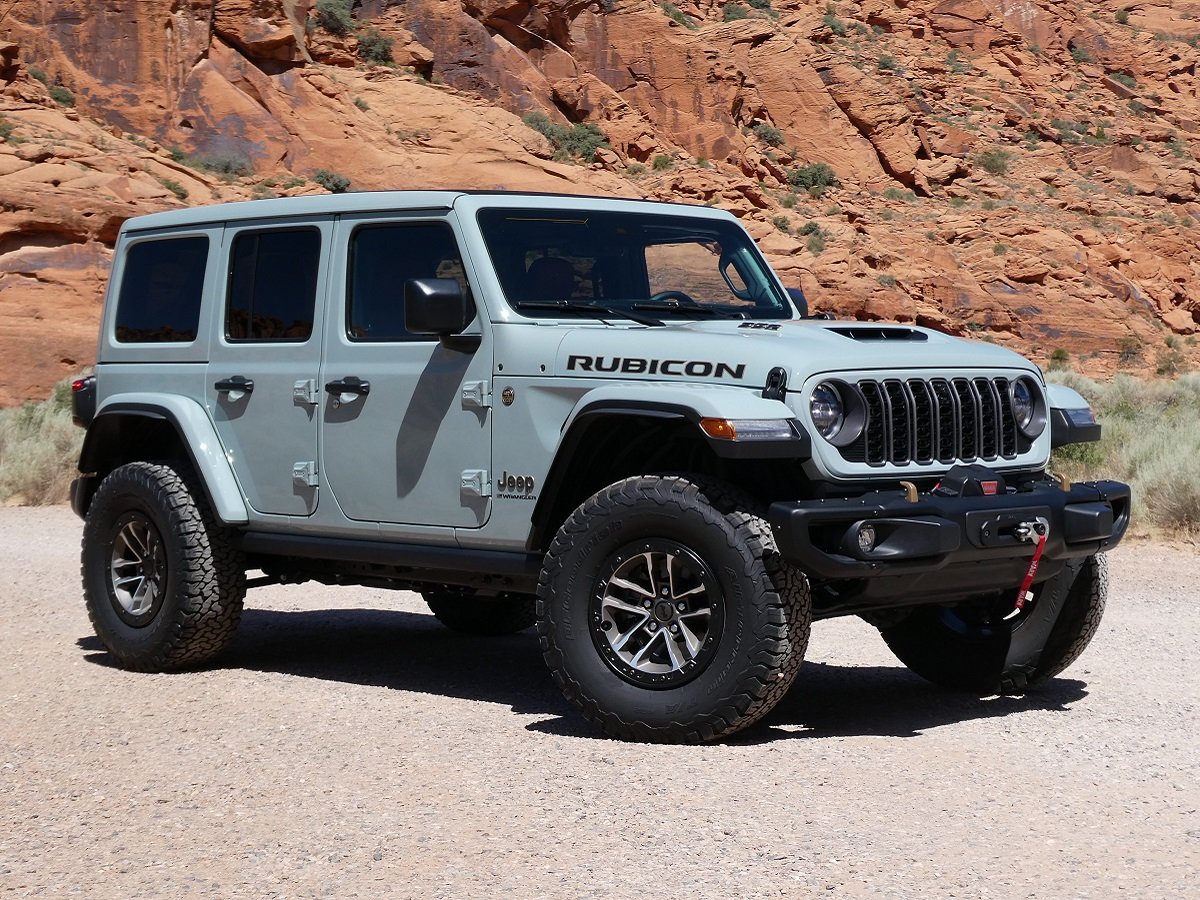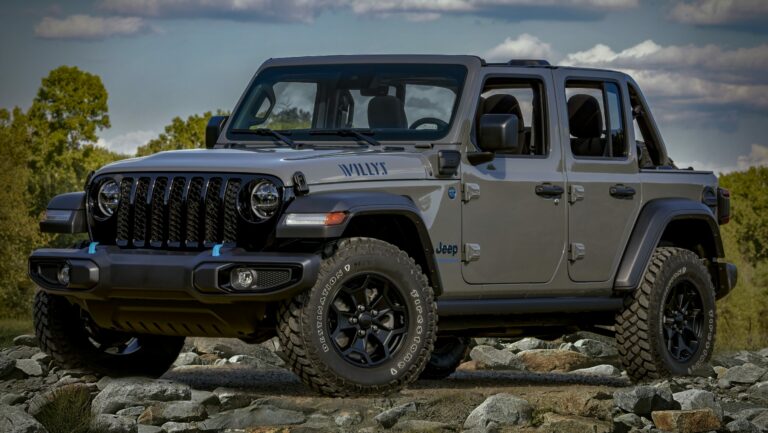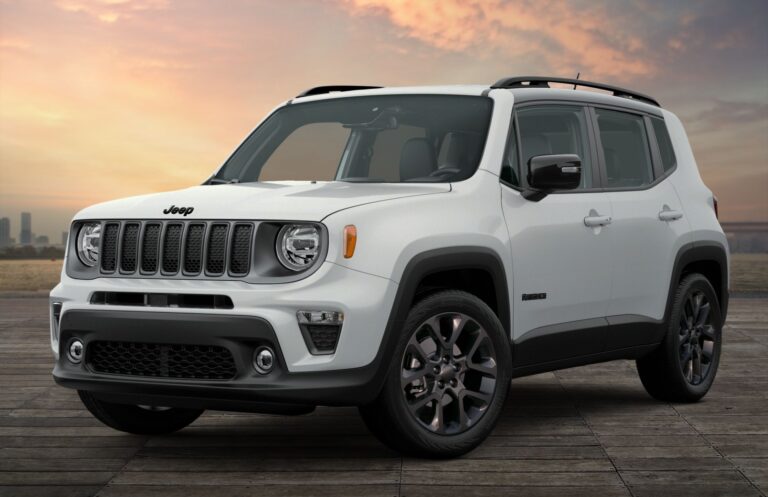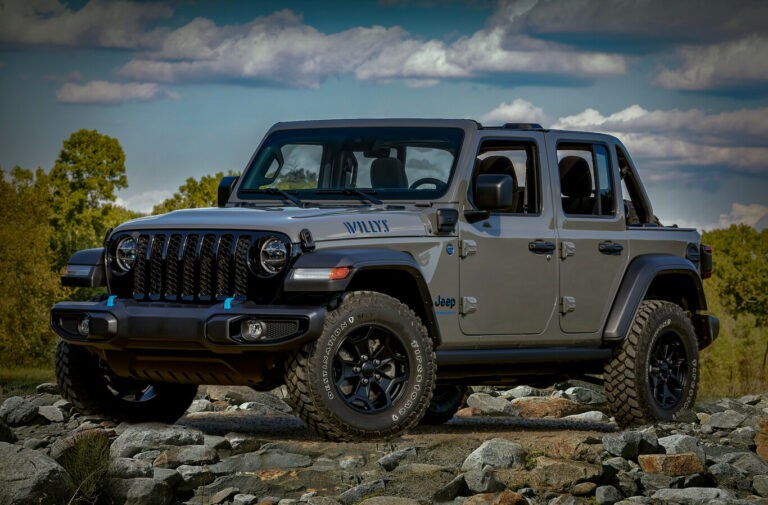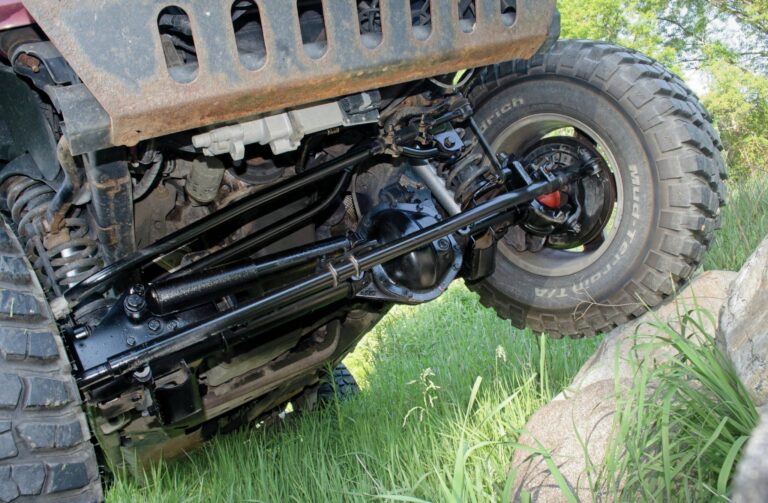How Many Miles Does A Jeep Wrangler Unlimited Last?
How Many Miles Does A Jeep Wrangler Unlimited Last? jeeps.truckstrend.com
The Jeep Wrangler Unlimited stands as an icon of adventure, freedom, and rugged capability. Its distinctive design and legendary off-road prowess have endeared it to a passionate community of owners worldwide. However, for prospective buyers and current owners alike, a fundamental question often arises: "How many miles does a Jeep Wrangler Unlimited truly last?" This isn’t just about reaching a certain number on the odometer; it’s about reliability, cost of ownership, and the assurance that your beloved Jeep can continue to tackle trails and daily commutes for years to come. Understanding the factors that contribute to a Wrangler Unlimited’s longevity is key to maximizing its lifespan and enjoying its unique attributes for as long as possible.
The Core Expectation: An Enduring Spirit on Wheels
How Many Miles Does A Jeep Wrangler Unlimited Last?
Generally, a well-maintained Jeep Wrangler Unlimited is expected to last between 150,000 to 200,000 miles without major powertrain overhauls. Many owners proudly report their Wranglers exceeding this benchmark, reaching 250,000 miles or even 300,000 miles with diligent care and timely repairs. While 200,000 miles is a widely accepted good lifespan for most modern vehicles, the Wrangler’s robust, body-on-frame construction and simpler mechanicals (compared to some highly complex modern cars) often give it an edge in durability, particularly when properly looked after. The "Unlimited" designation, referring to the four-door model, doesn’t inherently change the mechanical longevity compared to the two-door, as they share most of the same core components.
Factors Influencing Your Wrangler Unlimited’s Longevity
The ultimate mileage your Jeep Wrangler Unlimited achieves is not predetermined but is a direct result of several critical factors. Understanding these can empower you to extend your vehicle’s life significantly.
1. Maintenance Habits: The Lifeline of Longevity
This is arguably the single most important factor. Adhering to the manufacturer’s recommended service schedule is paramount. This includes:
- Regular Oil Changes: Using the correct type and viscosity of oil at recommended intervals prevents premature engine wear.
- Fluid Checks and Changes: Transmission fluid, differential fluid, transfer case fluid, coolant, and brake fluid all have service lives and need to be monitored and replaced. These often get overlooked but are crucial for component health.
- Tire Rotations and Balancing: Ensures even tire wear and reduces strain on suspension components.
- Brake Inspections: Timely replacement of pads and rotors prevents damage to more expensive components.
- Filter Replacements: Air filters (engine and cabin) and fuel filters ensure optimal performance and protect vital systems.
- Scheduled Tune-ups: Spark plugs, wires, and other ignition components need periodic replacement to maintain engine efficiency.


2. Driving Conditions and Style
How and where you drive your Wrangler significantly impacts its lifespan:
- Off-roading: While built for it, aggressive off-roading puts immense stress on the drivetrain, suspension, frame, and body. Regular inspections after off-road excursions are vital to catch potential damage early.
- Highway vs. City Driving: Highway miles are generally "easier" on a vehicle than stop-and-go city driving, which involves more braking, accelerating, and idling.
- Aggressive Driving: Frequent hard acceleration, sudden braking, and high-speed cornering accelerate wear on the engine, transmission, brakes, and suspension.
- Towing: Heavy or frequent towing can strain the engine, transmission, and braking system. Ensure your Wrangler is properly equipped and you adhere to towing limits.
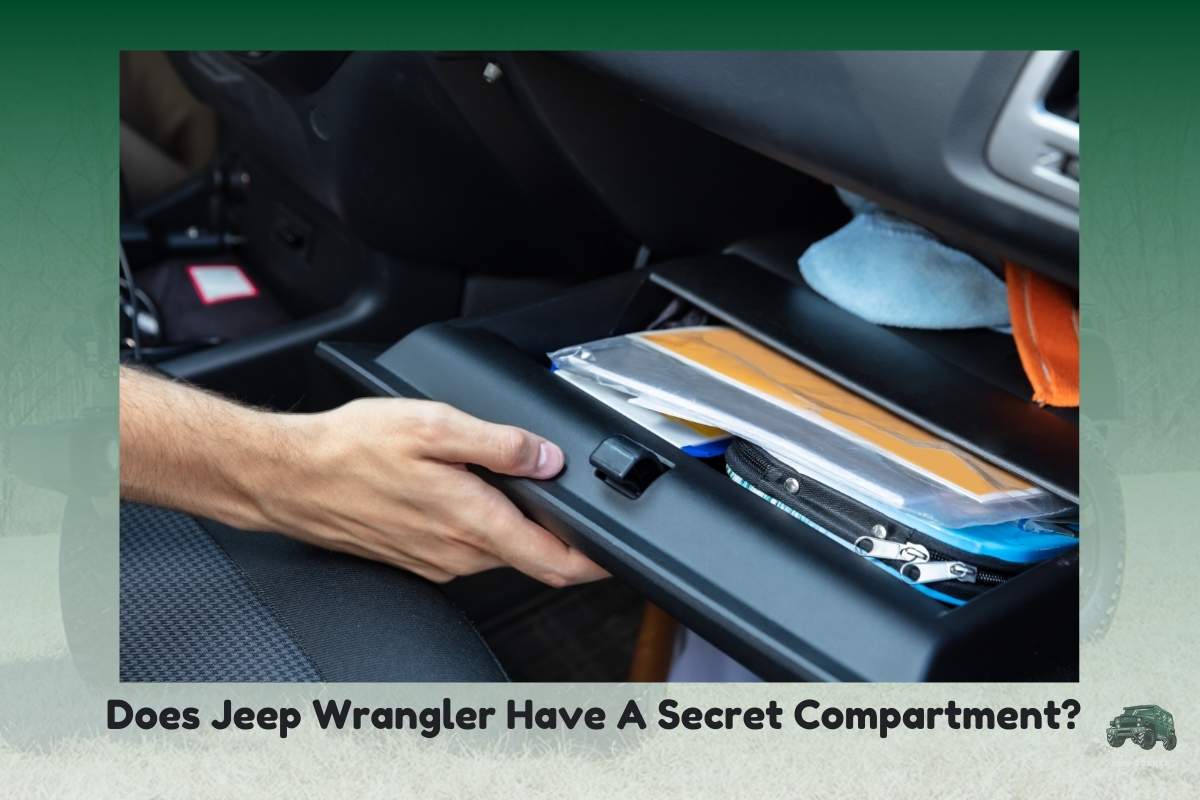
3. Climate and Environment
- Salt Exposure: Road salt used in winter conditions is highly corrosive and can lead to premature rust on the frame, suspension components, brake lines, and body panels. Regular washing, especially the undercarriage, is essential.
- Extreme Temperatures: Both extreme heat and cold can put stress on fluids, hoses, and electrical components.
4. Modifications
Many Wrangler owners modify their vehicles for performance, aesthetics, or off-road capability.
- Pros: High-quality, properly installed modifications (e.g., reinforced suspension, upgraded cooling) can enhance durability in specific scenarios.
- Cons: Poorly chosen or installed aftermarket parts, oversized tires, or extreme lift kits can put undue stress on the drivetrain, steering, and suspension, potentially reducing their lifespan. Always choose reputable brands and professional installation.
5. Engine and Transmission Type
The Wrangler Unlimited has offered various powertrains over its generations (e.g., 3.6L Pentastar V6, 3.8L V6, 2.0L Turbo, 3.0L EcoDiesel V6). While all are designed for durability, each has its own characteristics and potential longevity quirks. Generally, simpler, naturally aspirated engines like the Pentastar V6 are known for their long-term reliability when maintained.
Key Components and Their Lifespan Considerations
- Engine: The heart of your Jeep. With proper oil changes and cooling system maintenance, modern Wrangler engines (especially the Pentastar V6) are known to be very robust and capable of high mileage.
- Transmission: Both manual and automatic transmissions can last the life of the vehicle if fluids are changed regularly and they aren’t subjected to excessive strain (e.g., heavy towing beyond limits, aggressive off-roading without proper gear selection).
- Suspension and Steering Components: These are often the first to show wear, especially if the Jeep is frequently off-roaded or heavily modified. Ball joints, tie rods, bushings, and shocks are common wear items.
- Body and Frame: The body-on-frame construction is inherently strong. Rust is the primary enemy here, particularly in areas where road salt is used. Regular cleaning and rustproofing can significantly extend their life.
- Electrical System: Modern vehicles have complex electrical systems. While generally reliable, issues with sensors, wiring, or infotainment systems can arise with age.
Maximizing Your Wrangler Unlimited’s Lifespan: Practical Advice
Extending the life of your Jeep Wrangler Unlimited isn’t rocket science; it’s about consistent, proactive care.
- Follow the Maintenance Schedule Diligently: This is non-negotiable. Refer to your owner’s manual for specific intervals and types of service.
- Use Quality Fluids and Parts: Don’t skimp on oil, filters, or other replacement parts. OEM (Original Equipment Manufacturer) or equivalent quality aftermarket parts are best.
- Perform Regular DIY Inspections:
- Check fluid levels (oil, coolant, brake fluid, power steering fluid).
- Inspect tires for wear and proper inflation.
- Look for leaks under the vehicle.
- Listen for unusual noises (squeaks, grinding, clunks).
- Check lights and wipers.
- Address Warning Lights Promptly: Don’t ignore the "Check Engine" light or other warning indicators. A small issue caught early can prevent a major, expensive repair.
- Wash Your Jeep Regularly, Especially the Undercarriage: This is crucial for preventing rust, particularly if you live in a region with road salt or frequently go off-roading.
- Drive Responsibly: Avoid aggressive driving, excessive speeding, and hard braking. Smooth driving reduces wear and tear on all components.
- Consider Professional Inspections: Even if you’re handy, a professional mechanic can spot issues you might miss during routine checks. This is especially true before long trips or after severe off-roading.
- Understand Your Mods: If you have aftermarket modifications, understand their impact and adjust your maintenance accordingly. For example, larger tires might necessitate more frequent suspension checks.
Common Wear Points and Potential Challenges
While robust, the Wrangler Unlimited does have some known areas that might require attention over its lifespan:
- Suspension Components: Ball joints, tie rods, and bushings are common wear items, especially with lift kits or frequent off-roading.
- Steering Play/Death Wobble: While less common in newer generations (JL) than older ones (JK), issues like "death wobble" (a violent shaking of the front end) can occur due to worn steering or suspension components. Prompt diagnosis and repair are key.
- Rust: The frame, hinges, and body panels (especially around the doors and tailgate) are susceptible to rust, particularly in harsh climates.
- Soft Top/Hard Top Maintenance: Soft tops can degrade over time, requiring replacement. Hard top seals can leak, needing periodic attention.
- Electrical Gremlins: Like many modern vehicles, sensors, wiring harnesses, and infotainment systems can sometimes develop issues with age.
Resale Value and Mileage
A higher mileage Wrangler Unlimited will naturally command a lower resale price than a lower mileage one of the same year and condition. However, a well-documented service history, evidence of meticulous care, and a clean vehicle history report can help mitigate the impact of high mileage on its value. Wranglers hold their value remarkably well compared to many other vehicles, even with higher mileage, due to their strong demand and perceived durability.
Estimated Lifespan Milestones and Maintenance Considerations
The following table provides a general guide to maintenance milestones and considerations for a Jeep Wrangler Unlimited. These are estimates and should always be superseded by your vehicle’s specific owner’s manual and a qualified mechanic’s advice.
| Mileage Milestone | Typical Maintenance/Inspection Points | Conceptual Cost Implication (Excluding Major Repairs) |
|---|---|---|
| 0 – 50,000 Miles | Routine Service: Oil changes, tire rotations, fluid checks, cabin/engine air filters. | Low to Moderate |
| Initial Inspections: Brake wear, suspension components (especially if off-roading), general system health. | ||
| 50,000 – 100,000 Miles | Expanded Service: All routine service, spark plugs, transmission fluid change (especially for towing/heavy use), differential fluid change, transfer case fluid change, coolant flush, drive belt inspection/replacement. | Moderate |
| Wear Items: Brake pads/rotors (if not already done), initial suspension component wear (e.g., shocks, minor bushings). | ||
| 100,000 – 150,000 Miles | Comprehensive Service: All previous services. Potential for second round of major fluid changes (transmission, diffs, transfer case), brake system overhaul, suspension component replacement (e.g., ball joints, tie rods, control arm bushings, shocks). | Moderate to High |
| Proactive Checks: Fuel pump, water pump, alternator, starter (components that often fail around this mileage). Rust inspection and mitigation. | ||
| 150,000 – 200,000 Miles+ | Extended Durability Focus: Continued diligent adherence to all previous maintenance. Expect more frequent replacement of wear items. Potential for major component replacement (e.g., engine gaskets, transmission rebuild/replacement, significant suspension overhaul). Focus on rust prevention and mitigation. | High (Variable based on previous care) |
| Ongoing Vigilance: Listen for new noises, feel for changes in driving dynamics, monitor all warning lights. |
Note: "Conceptual Cost Implication" is a general guide. Actual costs vary wildly based on parts, labor rates, and severity of issues.
Frequently Asked Questions (FAQ)
Q1: Is 200,000 miles considered good for a Jeep Wrangler Unlimited?
A1: Yes, absolutely. Reaching 200,000 miles is a strong indicator of a well-maintained and reliable vehicle. Many Wranglers, with proper care, can exceed this milestone.
Q2: What are the most common problems as Wranglers Unlimited age?
A2: Common issues in high-mileage Wranglers include wear of suspension and steering components (ball joints, tie rods, bushings), rust (especially on the frame and hinges), and potential electrical gremlins (sensors, wiring). Soft tops can also degrade over time.
Q3: Does off-roading reduce a Wrangler Unlimited’s lifespan?
A3: While Wranglers are built for off-roading, frequent or aggressive off-roading can accelerate wear on the drivetrain, suspension, and body components due to increased stress. Regular post-off-road inspections and more frequent maintenance are crucial to mitigate this.
Q4: Is it expensive to maintain a high-mileage Wrangler Unlimited?
A4: Maintenance costs for high-mileage vehicles tend to increase as components naturally wear out and require replacement. However, compared to some luxury or highly complex vehicles, parts for Wranglers are generally accessible, and the platform is relatively straightforward for mechanics. Proactive maintenance can prevent many expensive surprise repairs.
Q5: How often should I service my Jeep Wrangler Unlimited?
A5: You should always follow the manufacturer’s recommended service intervals found in your owner’s manual. Generally, this means oil changes every 5,000-10,000 miles (depending on oil type and driving conditions) and more comprehensive checks every 15,000-30,000 miles.
Q6: Can a Jeep Wrangler Unlimited last 300,000 miles or more?
A6: Yes, it is certainly possible for a Jeep Wrangler Unlimited to last 300,000 miles or even more. This typically requires exceptional maintenance, prompt attention to any issues, responsible driving, and sometimes, the replacement of major components like the engine or transmission if they fail prematurely.
Conclusion
The question of "How many miles does a Jeep Wrangler Unlimited last?" doesn’t have a single, definitive answer. While a well-maintained model can comfortably reach 150,000 to 200,000 miles, its ultimate longevity is largely in the hands of its owner. Through diligent adherence to maintenance schedules, responsible driving habits, and proactive attention to wear and tear, your Jeep Wrangler Unlimited isn’t just a vehicle; it’s a long-term companion for countless adventures. With proper care, its rugged spirit and capability can endure for hundreds of thousands of miles, proving that the freedom it offers is not just a promise, but a lasting reality.
